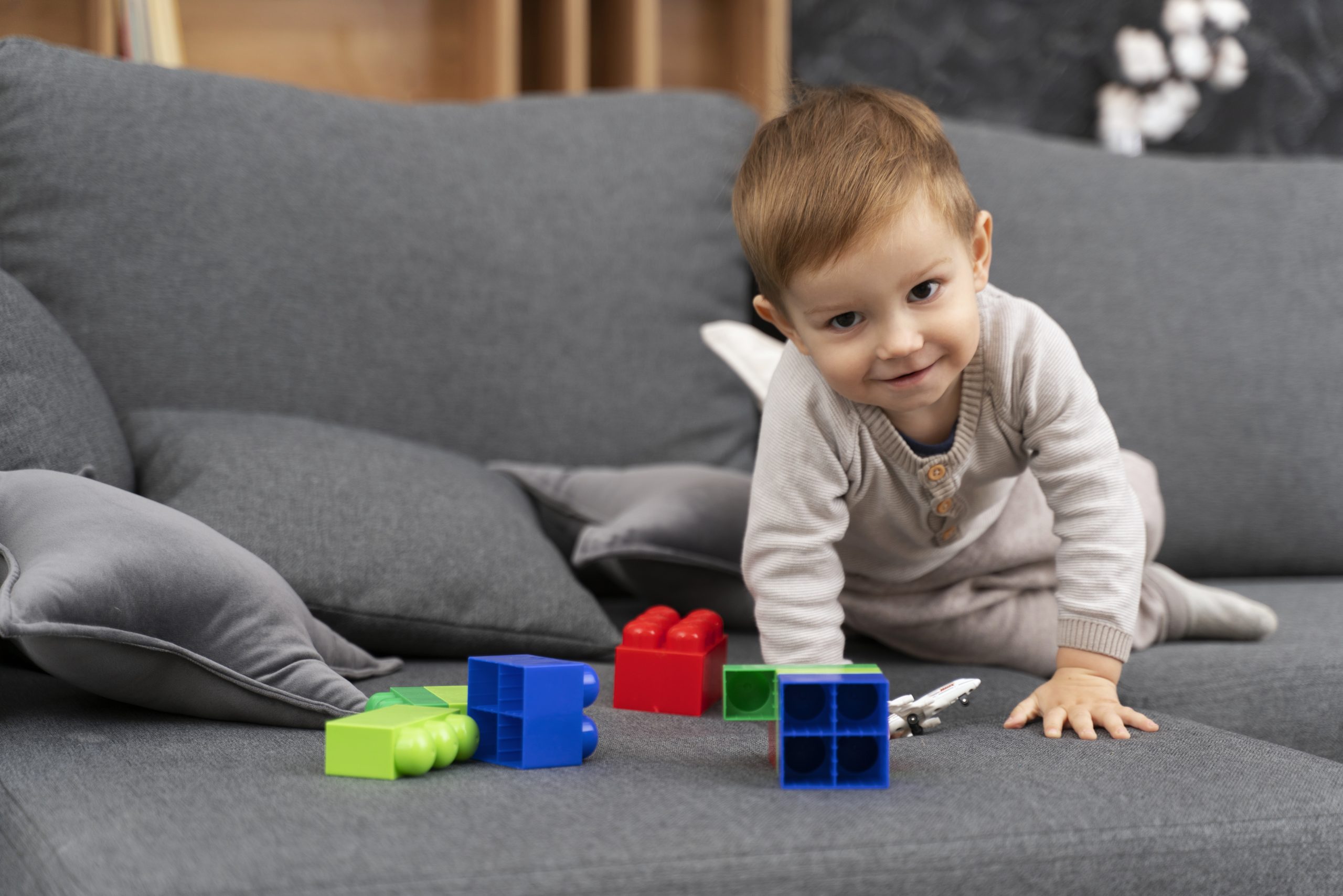

Researchers discovered that infants are substantially more likely to use “baby talk” during interactions with man made objects than with natural ones.
Infants frequently communicate via protophones, which are sounds similar to squeals, growls, or brief word-like noises like “da,” “aga,” and “ba.” These are known as the foundations of speech because they eventually lead to full language.
Objects are vital in this process because the more vocalization an object fosters, the closer a young infant is to language.
A recent study led by the University of Portsmouth examined the relationship between protophones and everyday items to assess their usefulness in developing language abilities.
To accomplish this, the researchers watched how frequently Zambian toddlers aged four to 18 months vocalized when utilizing toys and household goods, and then compared it to how they interacted with natural objects.
They discovered that when younger infants engaged with man made objects, the number of protophones produced was much larger than when they engaged with sticks, leaves, pebbles, and bird feathers.
When given the choice between domestic things and nature objects, the youngsters preferred household items such as mugs, shoes, and pens.
“Our findings suggest that object features have an impact on the way young children communicate,” stated lead author Dr. Violet Gibson of the University of Portsmouth’s Department of Psychology.
“Here, we observed that natural objects were less likely to encourage infants to produce protophones, and as a consequence they may not promote language skill development as much as artificial objects. Preverbal infants seem to favor household items, possibly because their features are designed for specific functional purposes, or in the case of toys, they’re designed to get a child’s attention and spark their interest.
“This supports existing evidence that the use of complex tools in social interactions may have contributed to establishing the groundwork required for the emergence of human language.”
According to the report, published in Scientific Reports, the ways in which parents connect with their children when they interact with items varied between cultures, however the researchers found no evidence that the mothers’ examined conduct altered the amount of protophones created.
Co-author, Developmental Psychologist Dr. Eszter Somogyi, added, “It is important to understand to what extent protophones are promoted in a natural environment from an evolutionary perspective, because of their ties to language skills and development.
“Some argue that vocal language about man made objects may have led to a number of important advancements for our ancestors, including speech evolution and a surge in manufacturing more sophisticated objects.”
The study also looked at whether youngsters display more social gazing while utilizing natural or manufactured objects, as this is one of the first ways for toddlers to communicate. The researchers discovered changes in the newborns’ gazing habits between the two object kinds, implying that object characteristics shape nonverbal communication as well.
“The infants in this study gazed at the mothers significantly more often when using natural objects compared to the household items, particularly at a young age,” explained Dr. Gibson. “It might be because they’re far less interested in natural objects, and look to their parents to assess their value.”
Co-author, Developmental Psychologist and Linguist Dr. Iris Nomikou, added, “Just like protophones, social gazing supports learning as it gives an infant an opportunity to flag to a parent or carer that they’re not sure about something they see.
There is some evidence that object-based communication is not confined to humans, and that object-based messages may be more important than previously imagined.
The scientists from the University of Portsmouth also discovered similar tendencies in chimps. A new study published in Animal Cognition discovered evidence that they use objects in a variety of ways to communicate with one another, and that this may be influenced by social variables.
“There is a lot in common in terms of how individuals, both human and animal, use the physical world to communicate,” said coauthor Dr. Marina DavilaRoss, Reader in Comparative Psychology at the University of Portsmouth.
“Both studies have contributed to the theory that objects have a significant impact in how communication skills are developed—but what is unique about them is the analysis of interactions with natural objects.
“This opens an interesting new door in language evolution research, and hopefully what we learned will contribute to future research on communication across different species and human cultures.”
To further investigate the association between items and newborn behavior, the team suggests a more extensive investigation of facial changes, as well as classifying objects based on color, size, and shape rather than just natural and manufactured.
They also say that it would be fascinating to compare this behavior to less sociable species such as chimps.
more recommended stories
 Phage Therapy Study Reveals RNA-Based Infection Control
Phage Therapy Study Reveals RNA-Based Infection ControlKey Takeaways (Quick Summary) Researchers uncovered.
 Pelvic Floor Disorders: Treatable Yet Often Ignored
Pelvic Floor Disorders: Treatable Yet Often IgnoredKey Takeaways (Quick Summary) Pelvic floor.
 Urine-Based microRNA Aging Clock Predicts Biological Age
Urine-Based microRNA Aging Clock Predicts Biological AgeKey Takeaways (Quick Summary) Researchers developed.
 Circadian Control of Neutrophils in Myocardial Infarction
Circadian Control of Neutrophils in Myocardial InfarctionKey Takeaways for HCPs Neutrophil activity.
 E-Cigarette Use and Heart Attack Risk in Former Smokers
E-Cigarette Use and Heart Attack Risk in Former SmokersKey Takeaways for Clinicians and Nurses.
 Ultramarathon Physiology: What HCPs Should Know?
Ultramarathon Physiology: What HCPs Should Know?Ultramarathon Metabolism: What Happens to the.
 High-Intensity Training and Oxidative Stress Insights
High-Intensity Training and Oxidative Stress InsightsNew Evidence Linking High-Intensity Training and.
 Sterilized Fermented Beverage for Obesity: New Evidence
Sterilized Fermented Beverage for Obesity: New EvidenceEarly Insights Into a Sterilized Fermented.
 36-Week Pre-eclampsia Screening May Reduce Term Risk
36-Week Pre-eclampsia Screening May Reduce Term RiskA New Preventive Strategy for Term.
 Cardiovascular Risk and Sudden Cardiac Death in Diabetes
Cardiovascular Risk and Sudden Cardiac Death in DiabetesRising Sudden Cardiac Death (SCD) Risk.

Leave a Comment